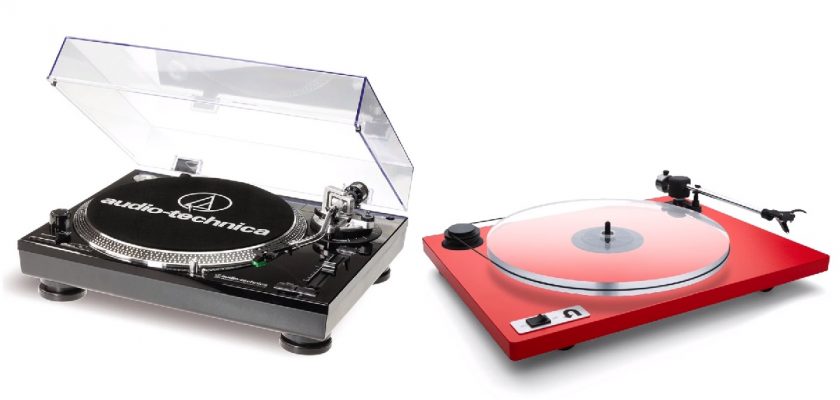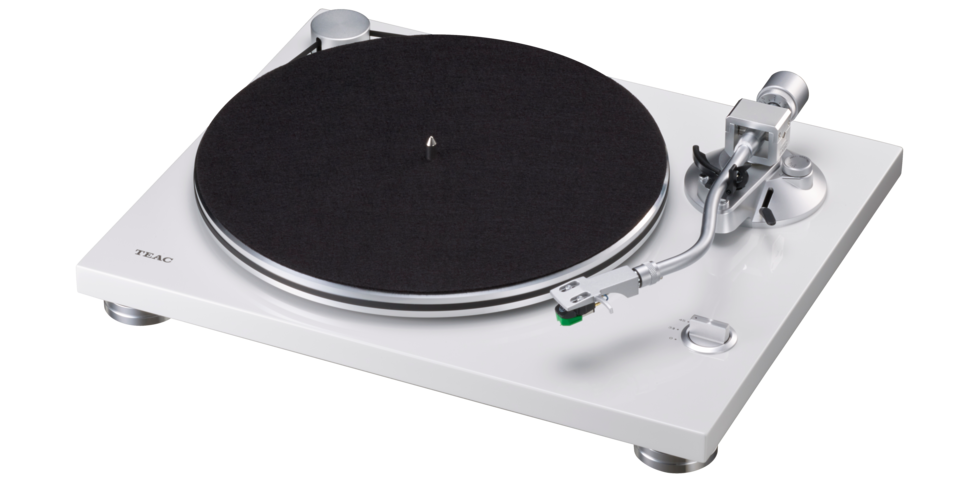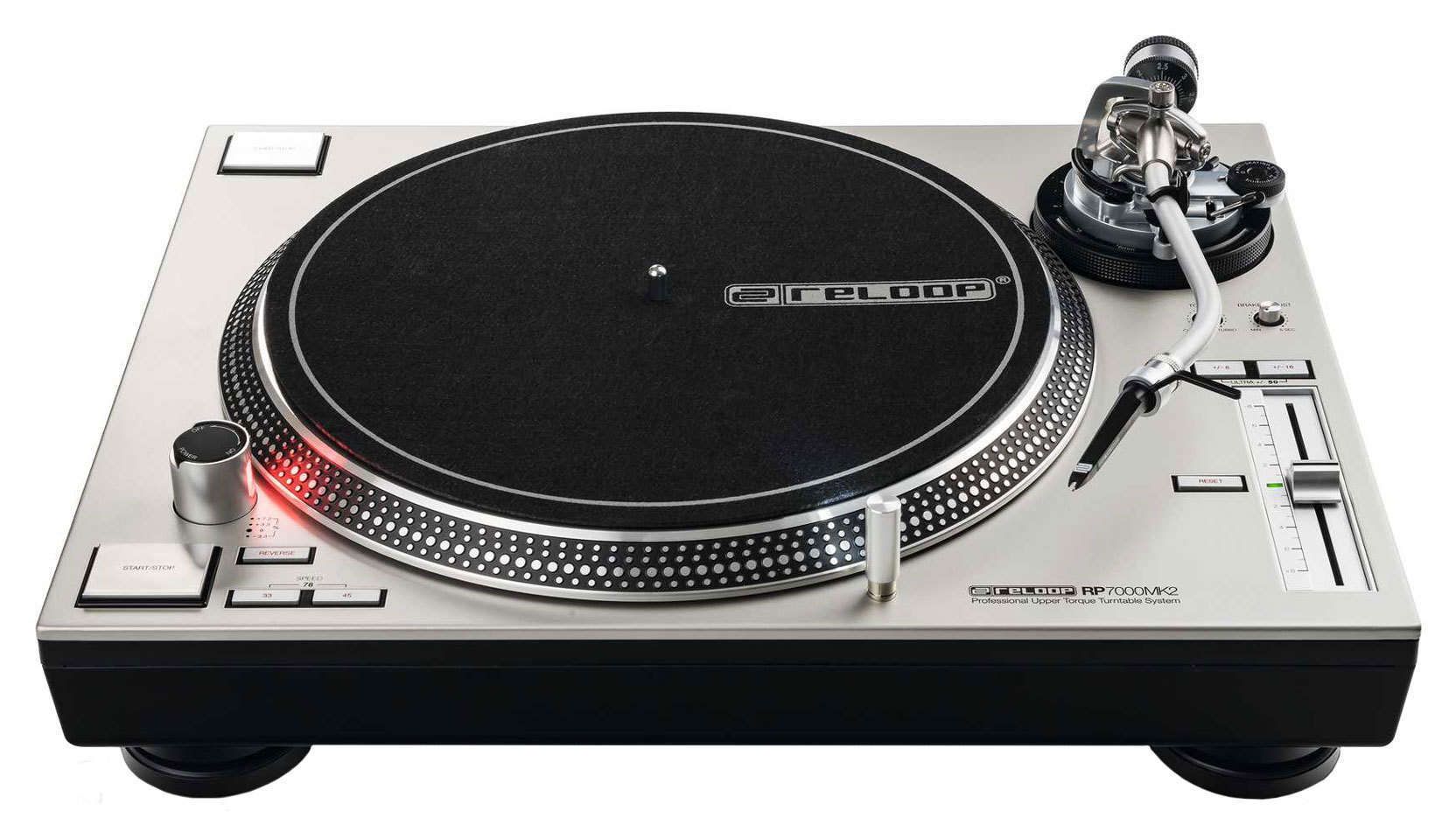When it comes to belt drive vs. direct drive turntables, chances are that you could get hung up on which of the two best suits you.
Both belt drive and direct drive possess distinct features and advantages. Consequently, this makes it even more confusing when picking one over the other. The good news is that we will explore the differences between the two, and it’ll therefore be easier for you to have a definite favorite.
Keep reading to discover everything there is to know about these two turntable models. By the time you’ll get to the end of the article, you’ll know what you want.

Belt Drive vs. Direct Drive Turntables
At the end of the day, your preferences will guide you into making your choice. Even so, if you value ease of use, long-term play options, and durability, consider a direct drive turntable.
If, however, you desire a classic design, consistent playback, and high-quality sound, consider the belt drive turntable.
A Belt Drive Turntable
Most turntables use belt drives when spinning on the turntable platter. The belt drive has an elastic belt. As the name suggests, it uses a mechanism that turns the platter using a belt attached to an electric motor. Also, the belt connects to the underside of the platter, and this causes it to rotate.
Because this turntable uses a belt, the belt drive mechanism takes a few seconds to gain its full speed. Ultimately, the belt also wears out with time and needs replacement. It usually takes an inexpensive and straightforward exercise.

A Direct Drive Turntable
Unlike a belt drive turntable, the direct drive turntable instantly gets up to speed.
Additionally, its motor is directly under the platter. A contrast from the belt drive turntable is that the platter spins freely with no resistance when you turn off the direct drive turntable.
These features make it the turntable of choice for DJs around the globe. Furthermore, the quick-start part means that the music is in the correct pitch from the first instance the stylus hits the record groove.
The direct drive turntable also gives you the ability to control its speed. As a DJ, if you wish to change your music tempo, it’s easy to do so with the available speed range adjustment on the direct drive table.
Belt drive tables, by contrast, take a few seconds to get the speed up. The belt as part of the mechanism means that if you spin the platter in either direction when the motor is off, it causes some wear on the belt. Furthermore, you cannot change its speed with the belt drive except if you switch it manually to a higher speed.

Similarities Between Belt Drive and Direct Drive Turntables
To the average person that wants to buy a turntable, you can choose either a belt or a direct drive turntable. The choice solely depends on the price for the newbie and not necessarily whether it’s a belt or direct drive.
Furthermore, both produce excellent sound quality. Of course, there are levels to sound quality. But both types offer incredible sound quality and have low-cost entry-level designs. In addition, both play records at different speeds, and they give you room to change the records easily. Also, you can make minor adjustments to components such as the tonearm.
Other nuances such as how they sound, what options they have, and how they work only interest hardcore turntable collectors or seasoned users.
These days, turntables fall under three main usage classes: The DJ, the serious music enthusiast, and the casual music lover. Therefore, turntables for each of the three categories of people are different. On that note, there is a specific emphasis on durability, adjustability, convenience, and performance characteristics that matter to the intended market.
What If You’re Not a DJ?
While DJs use direct drive turntables on most occasions, many other people buy the turntables to enjoy music. For this, the direct drive turntable may not be the best option. If you’re a vinyl lover, the goal is to listen to all of the nuances in the record grooves with minimal distortion. Thus, it’s not only about mixing music and changing speeds, some factors adversely affect the sound of your turntable.

For example with the direct drive option, you risk the noise from the motor getting to the platter and getting picked by the stylus as a background rumble.
On the other hand, the belt drive turntable helps separate the motor from the platter because the only connection is the rubber belt. That is why there’s a minimal chance that the motor sound affects your sound quality.
Speed Stability
How does your choice of turntable affect speed? It affects the consistency of speed. We conclude that a belt drive would have better speed stability if it uses a heavier platter. Once the platter gets into full speed, chances of having any slight changes in pitch are almost nil.
However, there could be a slight drift over extended periods compared to the direct drive. But, we feel this is less noticeable, as would be the case with the constant adjustments in a direct drive turntable.
A great belt drive requires a well-isolated motor and a heavier platter. If you get the two aspects right, then on most occasions the belt drive outperforms the direct drive and gives you pure music enjoyment. There’s less chance that the stylus will pick the motor noise and we perceive the speed as purer.
The direct drive turntable requires a lot of circuitry. It constantly looks at the motor’s speed and keeps the speed from changing by continually making adjustments. Models with a speed control option must have the added circuitry to change the speed.

In recent years, there’s massive popularity for turntables. The good thing is that direct drive manufacturers have not been sitting still. There’s new motor technology that significantly minimizes the minute speed changes. Others use heavy platters to reduce the effect as well.
Therefore, if you’re looking to own an upper-end version of a turntable with the $5,000+ price range, you’ll discover more direct drive models. There are also a few more models as you go above the $25,000. However, unless you’re a DJ, chances are that you’d not be willing to spend that much on a turntable.
A belt-drive turntable is probably what your budget can allow. It’s still worth it.
Advantages of Belt Drive Turntables
Belt drive turntables are generally quieter because they’re further away from the platter; therefore, less mechanical resonance gets transferred to the platter from the motor.
It causes a big difference, mainly because the platter causes a lot of vibration. The flat circular surface has a highly sensitive needle that rides on the vinyl.
Thus, because belt drive turntables remove the motor (vibration source) from the platter, there’s far less noise from the motor to the needle.
In addition to giving off purer sound, belt drive turntables are simpler to operate. The most crucial factor in the design is sound because the turntables listen to records.
In contrast, the direct drive turntable’s top priority is manipulating the record. Its second most crucial design element is sound quality.
Disadvantages of Belt Drive Turntables
While the belt drive turntables are very popular, their torque is much lower than direct drive turntables.
While this factor isn’t a critical quality, it’s a deal-breaker in some cases. Direct drive turntables have a more accurate playback speed than belt drive turntables.
Furthermore, over time, you’ll need to replace the belt drive. Why? The belt drive elastic wears down and can eventually break.
What Does It Take to Replace a Turntable Belt?
A belt should last you a long time, but you’ll need to replace it if it becomes too stretched, cracked, or loose.
Well, I don’t anticipate that it should be the case with a new belt for the next few years, at least.
Also, some manufacturers offer to upgrade the belt. Whereas they could be made from other materials to ensure a longer life, it also depends on how keen the manufacturer is to provide very few irregularities in its making.
How to Install the Belt on the Turntable
Follow this procedure to install a belt on your turntable:
- Remove the dust cover from the turntable base
- Bring out the rubber mat attached to the platter
- Lift the platter off the spindle
- Put the belt around the area below the platter
- Put back the platter on the spindle
- Turn the platter so that the square opening fits above the motor pulley
- Pull the attached ribbon so that you can fit the belt above the motor pulley
- Dislodge the ribbon from the belt
- Put back the dust cover and rubber mat
There you have it – your belt drive turntable in perfect condition.
Advantages of Direct Drive Turntables
DJs love direct drive turntables. Their design makes it easy to manipulate the turntable’s volume, speed, and direction.
Caveat: Not all direct drive turntables suit DJs. Some designs produce high-quality sound, and them being direct drives happens to be a coincidence as far as the design is concerned.
Disadvantages of Direct Drive Turntables
While these recorders seem reliable, they, in most cases, have a low-quality playback. Their high consistency and torque are a plus, but they have a high frequency of motor vibration noise attacks. That said, direct drive turntables have no vulnerability towards outside forces like your own hand or the stylus.
Thus, the unwarranted vibrations are often enough to push you to get a belt drive. In addition, most of the direct drive turntable owners have to buy shock absorbers which help lessen the noise. Overall, direct drive turntables are durable, but they are poor in sound quality.
Who Needs a Belt Drive Turntable?
If you’re getting pulled into the world of record players, you probably need to start with a simple belt drive turntable. In general, you’ll be in a position to get a good belt drive for less money than what a good direct drive would cost you.
Of course, you can get inexpensive direct drives, but a belt drive turntable at a similar cost has better quality sound. Furthermore, a newbie finds it easier to understand a belt drive turntable than a direct drive. A belt drive only has a few buttons, which means there are very few things you can mess up as a beginner.
People highly interested in quality sound, better known as audiophiles, need to consider getting the belt drive.
As we mentioned earlier, many people argue that there is no difference in sound quality between a belt drive and a direct drive. But, unless you intend to buy an expensive direct drive, the belt drive is quieter.
Other factors that make a turntable quieter include the needle, housing, platter, and cartridge.
Who Needs a Direct Drive Turntable?
If you’re a DJ, you need the direct drive turntable, period. It’s crucial that you mix two decks, change the speed when necessary, and start and stop on a dime.
DJ friends have direct drive turntables for shows, but at home, they use high-end belt drive turntables. That pretty much sums it up.
Why Would I Favor One Model Over the Other?
Of course, there would be no need for the other product if there was no caveat to one product.
Each turntable design has its pitfalls as much as it has strengths. Therefore, this means that a manufacturer chooses the shortcomings that are easier to deal with while making the most of the strengths.
The main forte of the direct drive turntable is largely its higher torque. This means they are less vulnerable to external forces like stylus weight and have faster start-up speed on the groove. That is why DJs love it because it allows them to stop and effectively align beats from separate decks.
Its invention in 1969 by Shuichi Obata, a Matsushita engineer, brought about a turntable that reaches the correct speed so rapidly. However, because the motor attaches to the platter, vibrations feed on the motor to the platter, and then there’s transmission to the cartridge. Inevitably, this leads to some level of distortion in the output.

When you isolate the motor in a belt drive system, it somehow sorts out the problem – the rubber belt partially takes care of any vibration. Therefore, the lessening of interference from the motor feeds into most areas of the final sound. This is due to the cartridge tracking information etched into the groove of the turntable more easily.
Because the belt can sometimes be rigid, in theory, the speed may not be consistently accurate due to potential slipping and stretching. That can only worsen if the belt doesn’t have the same thickness all round, or the platter or spindle aren’t perfectly cylindrical.
This leads to additional costs on the turntables because manufacturers take their time to make the components as precise as possible.
Does One Need An Amplifier For their Turntable?
This happens to be one of the most common questions for people starting on using the turntable.
Yes, it would help if you had an amplifier for your turntable. Because the recorder’s output signal isn’t sufficient to work up the speakers, there is another option. Powered speakers offer a better solution because of their built-in amplifier.
Thus, you can directly connect them to the turntable, and there’ll be no need for a separate amplifier.
FAQs
Is Direct Drive More Efficient Than Belt Drive?
A belt drive turntable, reportedly, produces better quality sound. The belt drive reduces vibrations, and the record player’s sound becomes purer. That is why most record player owners focus on noise reduction as a priority. What’s more? The more you reduce the feedback noise, the clearer the output.
Can You Scratch With A Belt Turntable?
Yes, you can scratch belt drive turntables, but they aren’t ideal. Because the platter uses a belt, there can be a delay in the platter picking up its speed. Thus, this means they aren’t as responsive as the direct drive turntables.
Is A Belt Drive Better?
A belt drive turntable, reportedly, has better sound quality. This is because the belt drive minimizes vibration noise, making the record player’s sound clearer. Most record player owners focus on reducing motor noise as a priority.
What’s The Difference Between Direct Drive And Fully Automatic Turntables?
The critical difference between the direct drive and fully automatic turntables is how the motor drives the record platter. In belt drive turntables, the motor sits off to the side. For direct drive turntables, the platter rests on the motor directly.
Conclusion
Today’s direct drive DJ turntables add premium DJ interaction in the live performance realm. Therefore, when it comes to belt drive vs. direct drive turntables, you can’t go wrong with either.
Assuming you bought a good quality record player, whether it’s direct drive or belt drive, it doesn’t matter too much. That said, belt drive turntable models are more popular with most people. That’s why on most occasions, we recommend them.
Have you used any of the two turntable models before? Give your feedback in the comment section.
You may also be interested in:

1) as stated in the article added vibration is the chief enemy of good sound. Records are a physical representation of the recorded sound causing the stylus to vibrate. Any added vibration = distortion
2) vibration transmits from the surface the turntable rests on, particularly bass frequencies. A competent isolation system is needed for a turntable deck, be it spring suspension or a vibration damping deck
3) the vibration of the stylus can excite vibration in the tonearm if the arm has poor damping or is a bad mass
mismatch
It is far cheaper to build a good manual turntable with belt drive and spring suspension (the classic AR turntable)
than it is to build a direct drive with good deck isolation. Mass market has gone to direct drive because most
consumers prefer some degree of automation for play ( needle drop/return) which is more degradation prone with a belt drive.Turntable under $1K in general have mediocre deck isolation vs more costly turntables
Thank you for your points – agreed, vibration is indeed a hindrance…